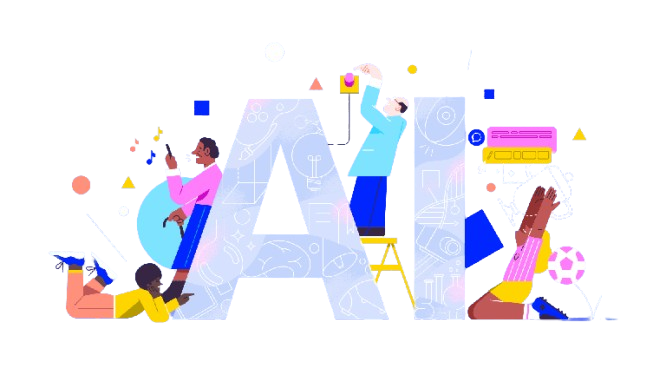The world of Artificial Intelligence is no longer a distant future – it’s the dynamic present, constantly evolving and reshaping industries at an unprecedented pace. As we look towards 2025 and 2026, the trajectory of AI development points towards even more profound transformations. Staying ahead of these trends is crucial for businesses and individuals alike, not just to adapt, but to thrive in this intelligent era.
At SyanSoft Technologies, we’re deeply immersed in the AI landscape, helping businesses harness its power to drive innovation and achieve their strategic goals. Based on our observations and industry insights, here are 7 key AI trends you need to be aware of right now to prepare for the coming years:

1. The Rise of Generative AI Beyond Content:
AI-powered code generation and software development: Automating more complex coding tasks and accelerating development cycles.
2. The Maturation of MLOps and AI Governance: As AI becomes more deeply integrated into business operations, the focus on managing and governing AI systems will intensify. Expect:
Widespread adoption of MLOps (Machine Learning Operations): Streamlining the development, deployment, and monitoring of AI models for increased efficiency and reliability.
Emphasis on AI ethics and bias mitigation: Development of robust frameworks and tools to ensure fairness, transparency, and accountability in AI systems.
Increased regulatory scrutiny: Governments worldwide will likely introduce more comprehensive regulations around AI deployment and data privacy.
Focus on explainable AI (XAI): Demand for AI models that can provide clear and understandable reasoning behind their decisions.
3. The Edge Gets Smarter: Distributed AI and TinyML: Processing data closer to its source will become increasingly prevalent, leading to:
Proliferation of Edge AI: Deploying AI models on devices like smartphones, IoT sensors, and autonomous vehicles for faster processing and reduced latency.
Growth of TinyML: Developing ultra-low-power AI models that can run on resource-constrained devices, enabling intelligent functionalities in everyday objects.
Hybrid AI architectures: Combining cloud-based AI for complex tasks with edge AI for real-time processing.
4. The Conversational AI Evolution: Multimodality and Deeper Understanding: Chatbots and virtual assistants will become even more sophisticated, moving beyond simple text-based interactions:
Multimodal AI: Systems that can understand and respond to various forms of input, including text, voice, images, and even gestures.
Enhanced natural language understanding (NLU): AI capable of comprehending nuances, context, and intent in human conversation with greater accuracy.
Personalized and proactive assistants: AI that anticipates user needs and offers relevant information and support proactively.


5. The Convergence of AI and Robotics: Intelligent Automation:
The synergy between AI and robotics will lead to more intelligent and adaptable automation solutions:
AI-powered robots for complex tasks: Robots capable of learning new skills, navigating dynamic environments, and making autonomous decisions in manufacturing, logistics, and healthcare.
Human-robot collaboration (Cobots) with enhanced intelligence: Robots that can work safely and effectively alongside humans, adapting to their movements and intentions.
AI for robot vision and manipulation: Advanced capabilities for object recognition, grasping, and manipulation in unstructured environments.
6. The Rise of AI Agents and Autonomous Systems:
We’ll see a growing trend towards AI systems that can operate more independently and proactively:
AI agents for task automation: Intelligent software entities capable of planning and executing complex tasks across various digital environments.
Autonomous vehicles and drones with enhanced perception and decision-making: Progress towards fully self-driving vehicles and more sophisticated drone applications.
AI-powered decision support systems: Tools that provide intelligent recommendations and insights to human decision-makers across various domains.

7. Democratization of AI Development and Accessibility:
AI development will become more accessible to a wider range of individuals and businesses:
Low-code/no-code AI platforms: Tools that allow users with limited coding skills to build and deploy AI models.
Pre-trained models and transfer learning: Easier and faster development of custom AI solutions by leveraging existing models trained on large datasets.
Cloud-based AI services with simplified interfaces: Making AI infrastructure and tools more readily available and user-friendly.
Staying Ahead with SyanSoft Technologies: The AI landscape of 2025-2026 promises to be transformative. By understanding these key trends, businesses can proactively strategize and leverage the power of AI to gain a competitive edge, drive innovation, and create new value.
At SyanSoft Technologies, we are committed to helping our clients navigate this exciting future. Our team of AI experts stays at the forefront of these advancements, providing tailored AI development services that empower you to harness the intelligent revolution.
